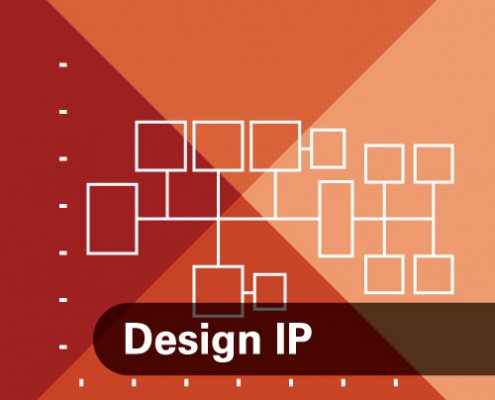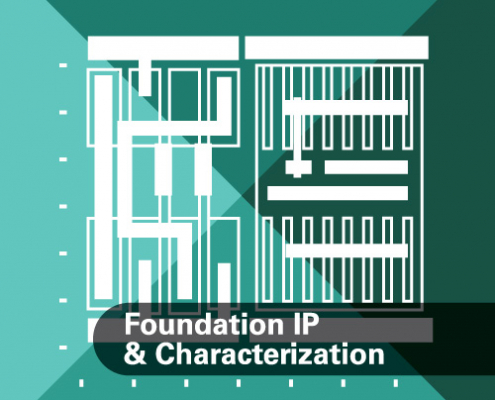 /wp-content/uploads/2019/11/silvaco-logo.png
0
0
Ingrid Schwarz
/wp-content/uploads/2019/11/silvaco-logo.png
Ingrid Schwarz2019-04-23 18:06:202021-01-11 17:57:31Next Generation of SoC Design: From Atoms to Systems
/wp-content/uploads/2019/11/silvaco-logo.png
0
0
Ingrid Schwarz
/wp-content/uploads/2019/11/silvaco-logo.png
Ingrid Schwarz2019-04-23 18:06:202021-01-11 17:57:31Next Generation of SoC Design: From Atoms to Systems
Design IP for Automotive SoCs: Trends and Solutions
The number and complexity of automotive SoCs and Control Systems is growing dramatically to fill the demand for new features in next-generation vehicles. Let's look at the specifics. In new cars you will have an advanced graphical user interface, voice recognition, and intuitive touchscreen capabilities. In addition to driver interactions, electrical control systems assist in both driving and stopping the vehicle. This will drive significant growth of the In-Vehicle Network (IVN) semiconductor market. In 2019, the total market in automotive semiconductors will reach 38 billion US dollars. By 2021, the cumulated annual growth rate (CAGR) for Level 4 Semi-autonomous vehicles will be 19%. Longer range projections are needed for Level-5 autonomous vehicles which have not arrived in the marketplace as yet. By 2030, the CAGR forecast for Level-5 vehicles is 41%. All of this is good news for the electronics industry. Which electronic companies are the top players? NXP, Infineon, Renesas, STMicroelectronics, and Texas Instruments had 1/2 of the market for automotive semiconductors in 2015 and are still market leaders.

Challenges and Solutions of Nanometer Library Characterization
Graham Bell sits down with Bernardo Culau, Director of Characterization, to discuss the challenges and Solutions of Nanometer Library Characterization. They also discuss the webinar on the same topic. You can catch the webinar at this link: Nanometer Library Characterization: Challenges and Solutions.
 /wp-content/uploads/2019/11/silvaco-logo.png
0
0
Ingrid Schwarz
/wp-content/uploads/2019/11/silvaco-logo.png
Ingrid Schwarz2019-03-21 17:30:082021-01-11 17:58:26Nanometer Library Characterization: Challenges and Solutions
/wp-content/uploads/2019/11/silvaco-logo.png
0
0
Ingrid Schwarz
/wp-content/uploads/2019/11/silvaco-logo.png
Ingrid Schwarz2019-03-21 17:30:082021-01-11 17:58:26Nanometer Library Characterization: Challenges and Solutions
Chris Browy of Avery Design Sits Down to Discuss Why Silvaco and Avery are Working Together
Silvaco just announced an agreement with Avery Designs for the distribution of Avery’s verification IP (VIP) for the MIPI I3C sensor interface protocol, which is used in smartphones, IoT devices and camera systems; and its VIP for in-car network applications based on the CAN- FD / LIN / FlexRay protocols.
 /wp-content/uploads/2019/11/silvaco-logo.png
0
0
Ingrid Schwarz
/wp-content/uploads/2019/11/silvaco-logo.png
Ingrid Schwarz2018-12-18 17:27:462021-01-11 17:58:40Improving Memory on the Edge Using Octal Serial Flash Cache
/wp-content/uploads/2019/11/silvaco-logo.png
0
0
Ingrid Schwarz
/wp-content/uploads/2019/11/silvaco-logo.png
Ingrid Schwarz2018-12-18 17:27:462021-01-11 17:58:40Improving Memory on the Edge Using Octal Serial Flash Cache /wp-content/uploads/2019/11/silvaco-logo.png
0
0
Ingrid Schwarz
/wp-content/uploads/2019/11/silvaco-logo.png
Ingrid Schwarz2018-11-29 17:24:202021-01-11 17:58:54MIPI I3C
/wp-content/uploads/2019/11/silvaco-logo.png
0
0
Ingrid Schwarz
/wp-content/uploads/2019/11/silvaco-logo.png
Ingrid Schwarz2018-11-29 17:24:202021-01-11 17:58:54MIPI I3C /wp-content/uploads/2019/11/silvaco-logo.png
0
0
Ingrid Schwarz
/wp-content/uploads/2019/11/silvaco-logo.png
Ingrid Schwarz2018-06-14 17:11:292020-12-21 21:02:47Bringing IP Management to the Enterprise Level
/wp-content/uploads/2019/11/silvaco-logo.png
0
0
Ingrid Schwarz
/wp-content/uploads/2019/11/silvaco-logo.png
Ingrid Schwarz2018-06-14 17:11:292020-12-21 21:02:47Bringing IP Management to the Enterprise Level /wp-content/uploads/2019/11/silvaco-logo.png
0
0
Ingrid Schwarz
/wp-content/uploads/2019/11/silvaco-logo.png
Ingrid Schwarz2018-04-12 17:00:192021-01-11 17:59:10Subsystem Insight
/wp-content/uploads/2019/11/silvaco-logo.png
0
0
Ingrid Schwarz
/wp-content/uploads/2019/11/silvaco-logo.png
Ingrid Schwarz2018-04-12 17:00:192021-01-11 17:59:10Subsystem Insight